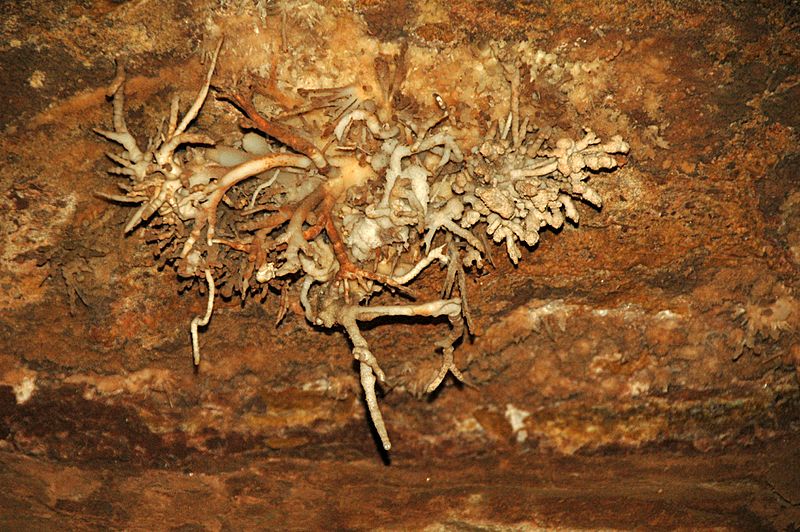Image: Helictites (Cave of the Winds, Manitou Springs, Colorado, USA) (8317600624)

Description: The general term for all secondary mineral deposits occurring in caves is speleothem. Between 200 and 300 different minerals have been reported to occur in various speleothems around the world. The most common speleothem minerals are calcite (CaCO3), aragonite (CaCO3), and gypsum (CaSO4·2H2O). Calcitic speleothem is given the rock name travertine. Varieties of cave travertine are named based on morphology and origin. The most common type is dripstone, which includes stalactites, stalagmites, and columns. Other varieties include flowstone, knobstone (a.k.a. coralloids), helictites, shelfstone, rimstone, cave pearls, frostwork, etc. The structures shown above are helictites - principally antler helictites, but some vermiform helictites are also present. Helictites are irregularly twisted speleothem structures formed by precipitation of minerals (in this case, calcite) from seeping water that moves by capillary action and hydrostatic pressure. Locality: Cave of the Winds, north of the town of Manitou Springs, central Colorado, USA
Title: Helictites (Cave of the Winds, Manitou Springs, Colorado, USA) (8317600624)
Credit: Helictites (Cave of the Winds, Manitou Springs, Colorado, USA)
Author: James St. John
Usage Terms: Creative Commons Attribution 2.0
License: CC BY 2.0
License Link: https://creativecommons.org/licenses/by/2.0
Attribution Required?: Yes
Image usage
The following page links to this image:

